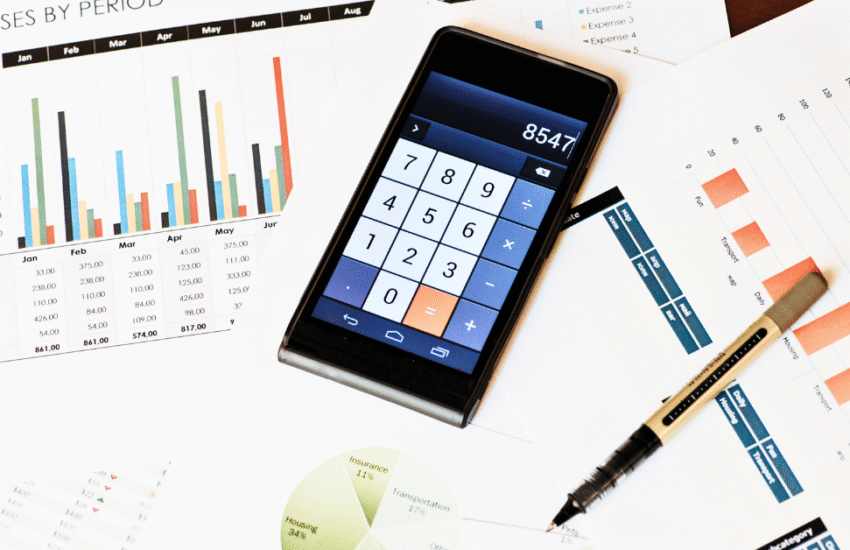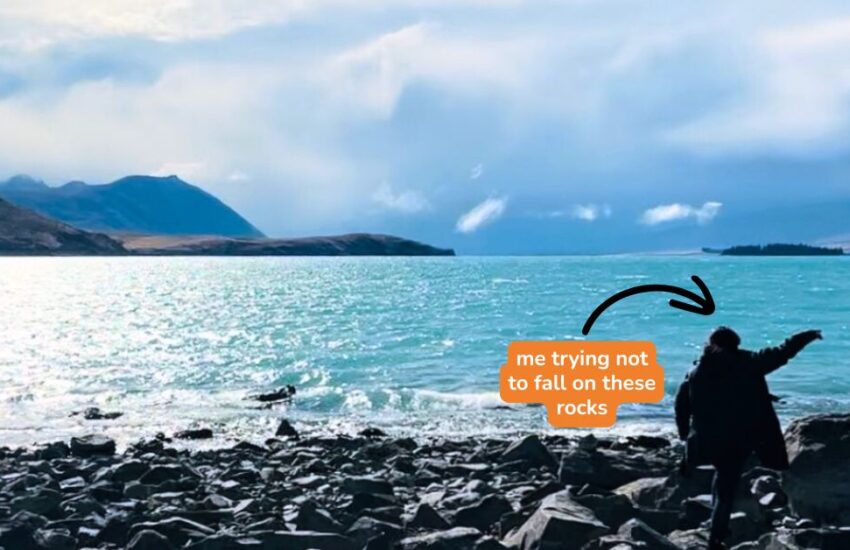Simplifying My Finances: How I Set Up My Bank, Card, and Investment System as a Freelancer
Even before I started freelancing, my finances were everywhere. I opened accounts because of promos, signed up for credit cards I didn’t need, and tried different savings challenges. It was messy and, honestly, a little stressful.
But after years of testing, learning, and closing what no longer served me, I’ve finally simplified my system. It’s not perfect, but it works for me, and that’s what matters.
In this post, I’m sharing my actual financial setup. I use these real strategies to manage my income, expenses, and investments as a full-time Filipino freelancer.
First, a disclaimer: This post isn’t sponsored, and I wasn’t paid to mention any of these banks or cards. I genuinely use them in my daily life, and everything I shared here comes from real experience.
But hey — I’m totally not closing my doors to recommending things I already use. Knock knock, UnionBank, Seabank, UNO… just saying. 😏
Letting Go of Traditional Bank Accounts
I used to hold on to several traditional bank accounts, mostly out of habit and loyalty. One of them was my first account from college, opened when I started earning online at 18. That account stayed with me through my first job, my early freelance projects, and many of life’s milestones.
But as my financial goals evolved, I had to be honest: it just wasn’t serving me anymore. The interest was barely there, the features felt outdated, and it had quietly become clutter in a system I was trying to simplify.
It felt sentimental to let go, but also freeing.
Now, every account I keep has a job. Nothing is “just in case.”
🏦 My 5 Accounts (Each With a Clear Job)
1. Wise – Where I Receive Freelance Pay and My Investment Gateway
I receive or transfer my freelance payments directly into my Wise USD account. Transfers come in fast, with little to no fees, and it keeps my USD income separate from my peso cash flow.
From Wise, I only convert what I need for monthly expenses and transfer it to my local bank. The rest stays in USD and is sent directly to my investment account.
This saves me on conversion fees and helps me stay aligned and focused. PHP is for spending, USD is for building wealth.
2. UnionBank – My “Needs” Account
UnionBank is the only traditional bank I’ve kept, mainly because of how seamlessly it integrates into my digital system. This is where I transfer just enough cash each month to cover essentials: rent, groceries, bills, and subscriptions. It’s also linked to my UnionBank credit card, so everything stays in one ecosystem.
Freelancer tip: Instead of pouring all your income into a local bank right away, try transferring only what you need first. It builds better awareness and reduces overspending from too much liquidity.
3. Seabank – My “Joy Fund”
This is where I park money that’s allocated for joy. Things like travel, essential tech upgrades for work, or thoughtful gifts. I let the money sit there and earn interest while I wait to use it.
I call it my Joy Fund because I’ve already decided that money is meant for enjoyment, just not yet.
Seabank’s higher interest rate makes it perfect for this. While the money rests, it grows quietly in the background. And when I’m ready to book that trip or buy that thing, it’s there, ready to use.
4. UNO Bank – My Emergency Fund
UNO is where I park my emergency fund because it offers competitive interest rates.
I intentionally keep this fund in a different bank to reduce temptation. If it’s not sitting right next to my daily spending accounts, I’m far less likely to touch it.
UNO also offers short-term 3-month time deposits, which I use for a portion of the fund to earn a bit more while keeping access relatively easy. The rest stays in their regular high-interest savings, available anytime, just in case.
Here’s how I split it:
-
30% in 3-month time deposits (slightly higher interest rates)
-
70% in high-interest regular savings
I don’t use UNO’s 12-month time deposits because it would defeat the whole point of an emergency fund being accessible when needed.
5. GCash – My Transaction Wallet
Let’s be real — GCash is part of life now. I don’t use it for savings, but it’s my go-to for paying bills, quick transfers, and everyday convenience. It’s not part of my core banking system, but I treat it more like a wallet (which it is). I also use it hand-in-hand with my GCash Visa card when I travel.
💳 My Simple Cards
I used to collect a lot of cards, but I realized it was stressful to keep track of everything. Now, I stick to just three. Here are the debit and credit cards I use to keep things easy and intentional:
-
UnionBank U Card – for everyday small purchases, subscriptions, and online transactions. It has no annual fee and fits my lifestyle without adding pressure or complexity.
-
UnionBank Visa Travel Rewards – a rewards credit card I use with caution. I reserve it for big, planned purchases where I can maximize points or promos. I always pay it off in full, meaning I don’t even try using it if I don’t have the cash to pay it off in full.
And here’s a tip I’ve learned from experience:
I don’t use the card in the month leading up to the annual fee, so I have zero balance on the card. That way, I have leverage when I request a waiver. A zero balance makes it easier for the bank to approve it, especially if I hint at cancelling the card.
My sister worked in banking, and I know that banks don’t want to lose a good customer. This small move has helped me successfully waive my annual fee so far… no drama, just good timing and confidence.
-
GCash Visa – a prepaid debit card linked to my GCash wallet. I like using this when I travel because it offers lower foreign exchange rates and gives me better control over my spending. I can only spend what I’ve loaded into the wallet, unlike a credit card.
It’s not a credit card, but it works almost everywhere a Visa card is accepted, perfect for travel without surprise fees or overspending.
💰 My 3 Investment Accounts
1. Pag-IBIG MP2 – 15% allocation
This is my low-risk option in pesos, perfect for medium-term goals (3–5 years) like major life upgrades or rebalancing flexibility. I put in about
2. Global Index Fund – 80% allocation
Most of my long-term investments are here. I invest in a global index fund that tracks the performance of companies around the world. It’s simple, passive, low-maintenance, and helps me grow my money steadily over time.
3. Crypto – <5% allocation
I only keep a small amount in crypto, less than 5% of my total investments. It’s high risk and very volatile, so I don’t rely on it for serious goals. I just keep a little bit there out of curiosity and to stay exposed in case it grows over time.
🧠 A Few Personal Money Rules I Follow
Even with a clean setup, I still stick to a few everyday rules that help me stay grounded:
- Use cash for small daily things. It keeps spending mindful.
- Prioritize needs first, always. And plan for wants.
- Credit cards are for planned purchases only. No surprise swiping. And it’s always paid in full.
- Frugal, but not cheap. I still treat myself and the people I love. That’s what my Joy Fund is for.
It’s not perfect, and that’s okay. Sometimes I deviate. But I always return to the system that supports me best.
Why I’m Really Simplifying
Beyond interest rates and bank features, the real reason I’m simplifying is this: The fewer decisions I have to make, the better I manage my money.
Every extra account, card, or app is one more thing to check, track, and think about. By cutting out the clutter, I create more mental headspace and more consistency.
Simpler finances are easier to maintain. And the easier something is to maintain, the more successful it becomes over time.
This system gives me clarity. I know where my money goes. I know what each account is for. I don’t feel overwhelmed when it’s time to pay bills, move funds, or invest.
That peace of mind? Totally worth it.
Final Thoughts
Simplifying my finances wasn’t about being ultra-minimalist or perfectly optimized. It was about creating a system that helps me live with more clarity, less stress, and deeper alignment with what I actually value.
My setup isn’t the “right” way to manage money, but it’s the way that works for me, here and now.
If you’re in the process of reworking your own setup, just know:
- You’re allowed to outgrow old accounts.
- You’re allowed to choose simplicity over hype.
- And you’re allowed to build a system that truly fits your life.
Let’s normalize money systems that feel good, not just look good.
💬 What About You?
Are you simplifying your finances this year?
Still holding onto accounts or cards that no longer serve you?
Have a question or just want to connect? Feel free to send me an email or follow along on Instagram @virtualtita. Let’s talk freelancing, personal finance, or anything in between. And if you’d like tips and stories delivered straight to your inbox, sign up for the newsletter below.



